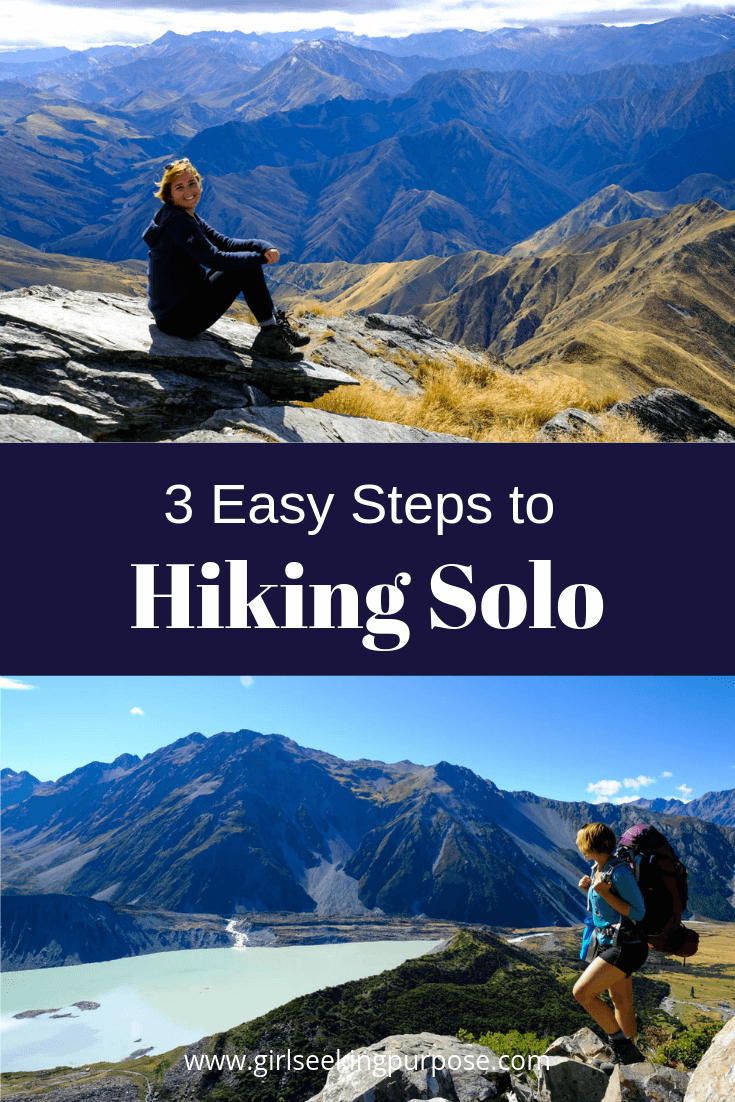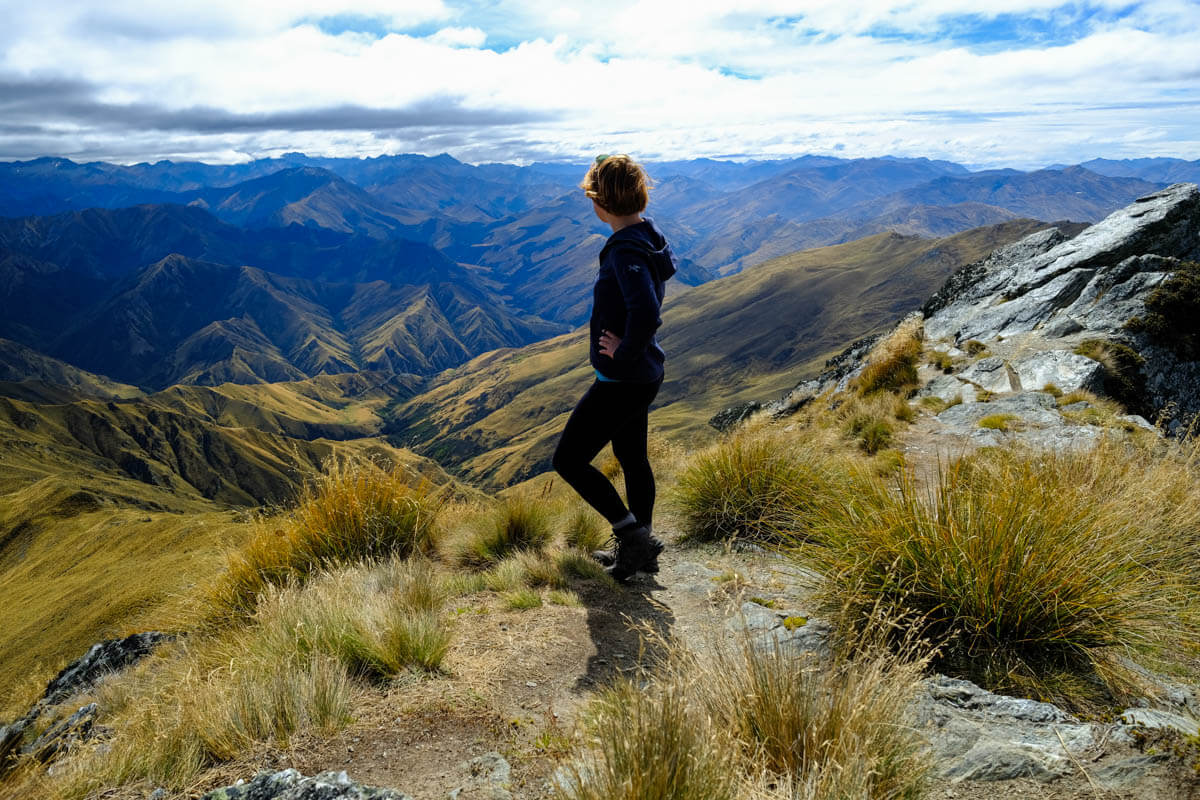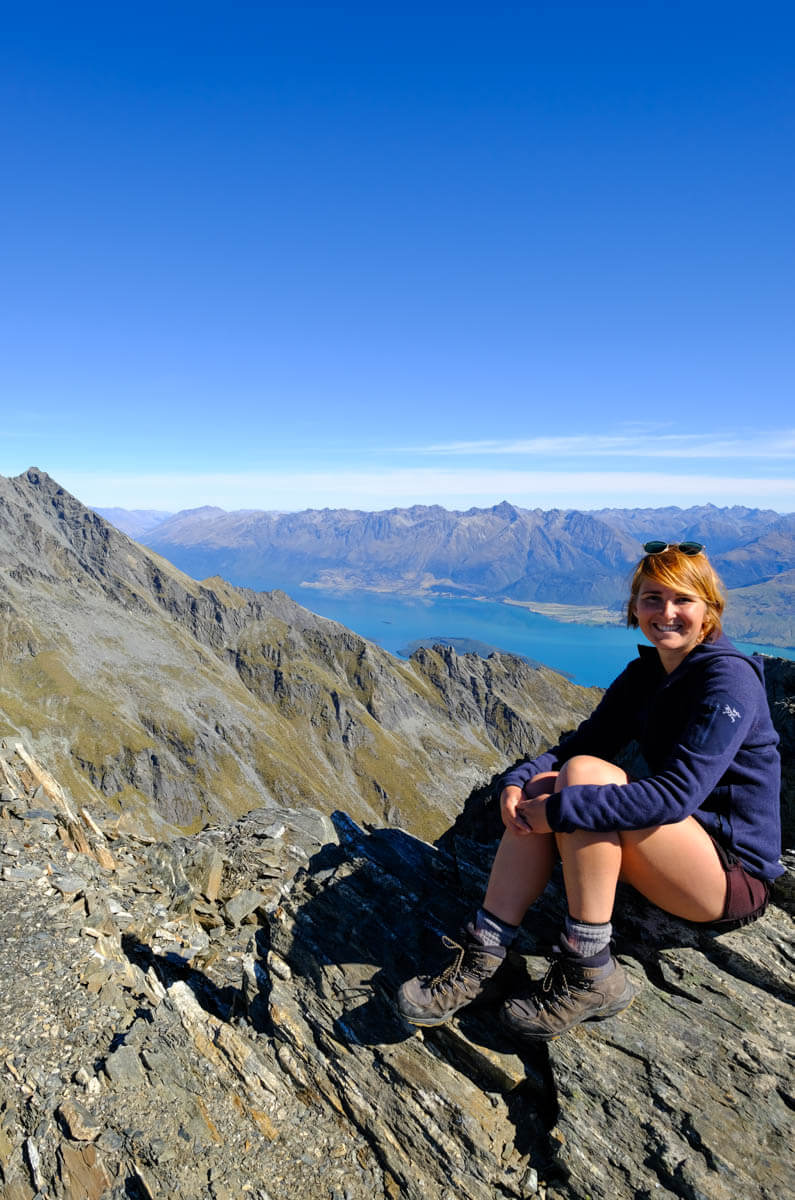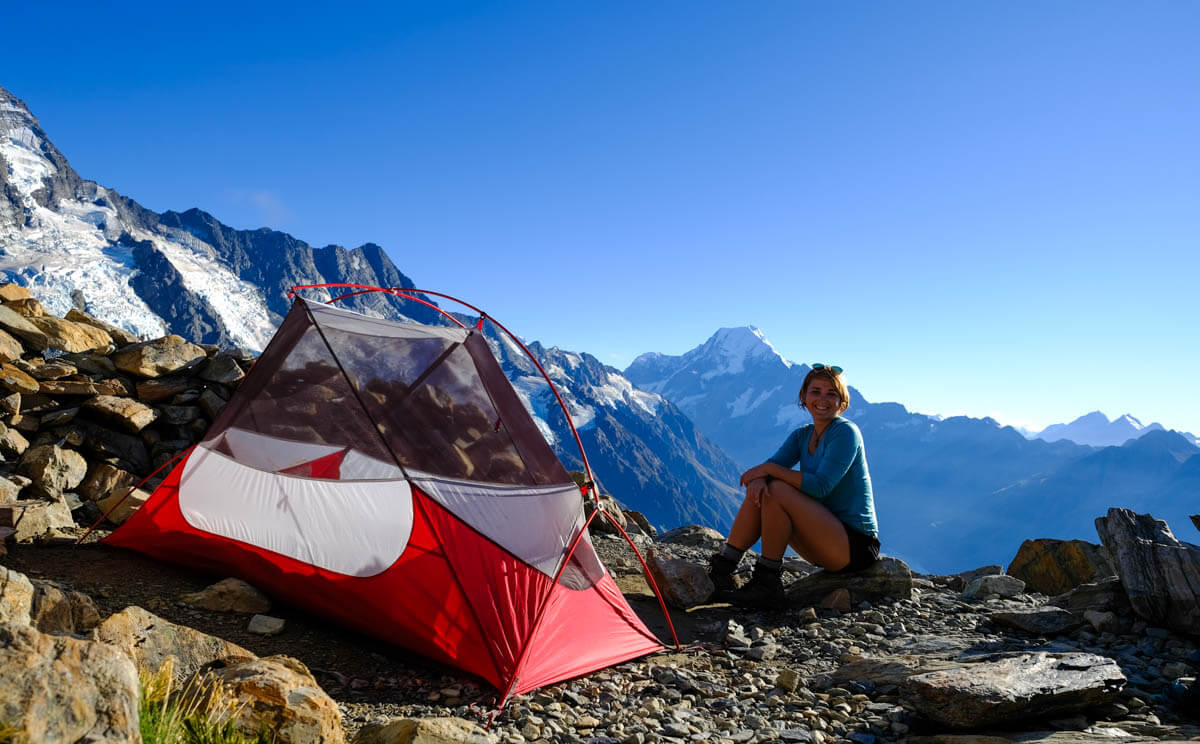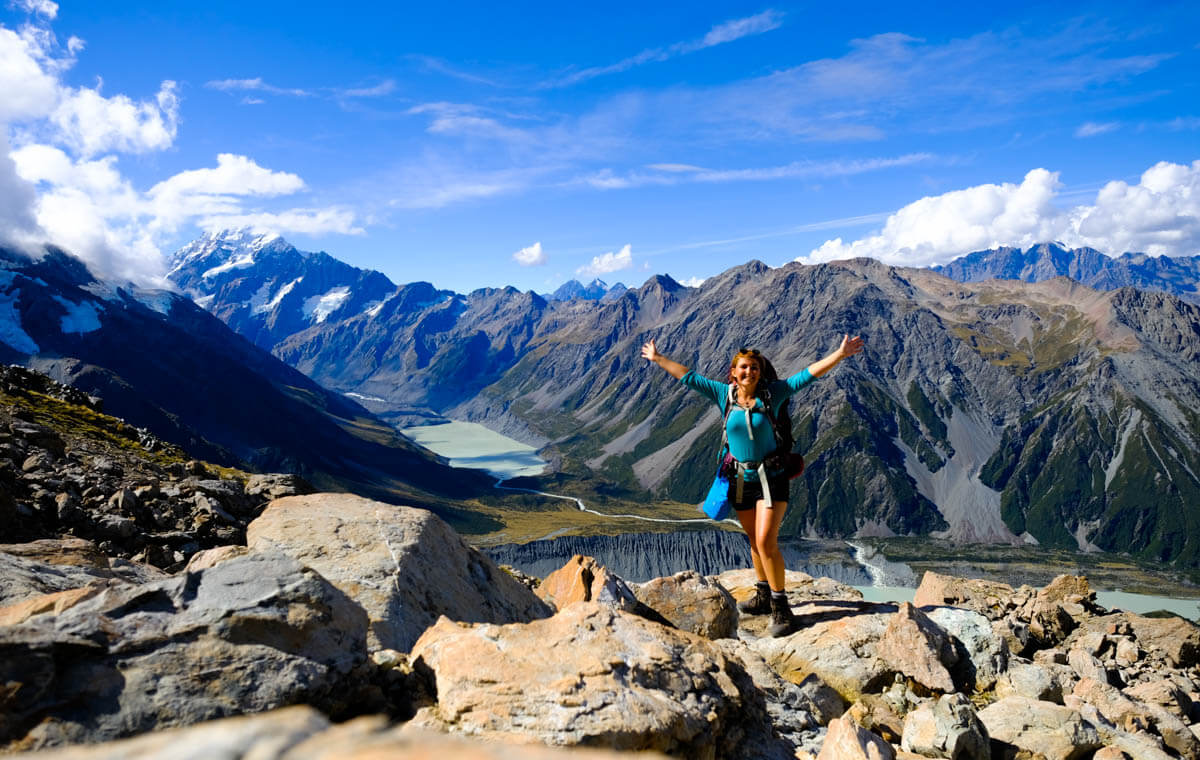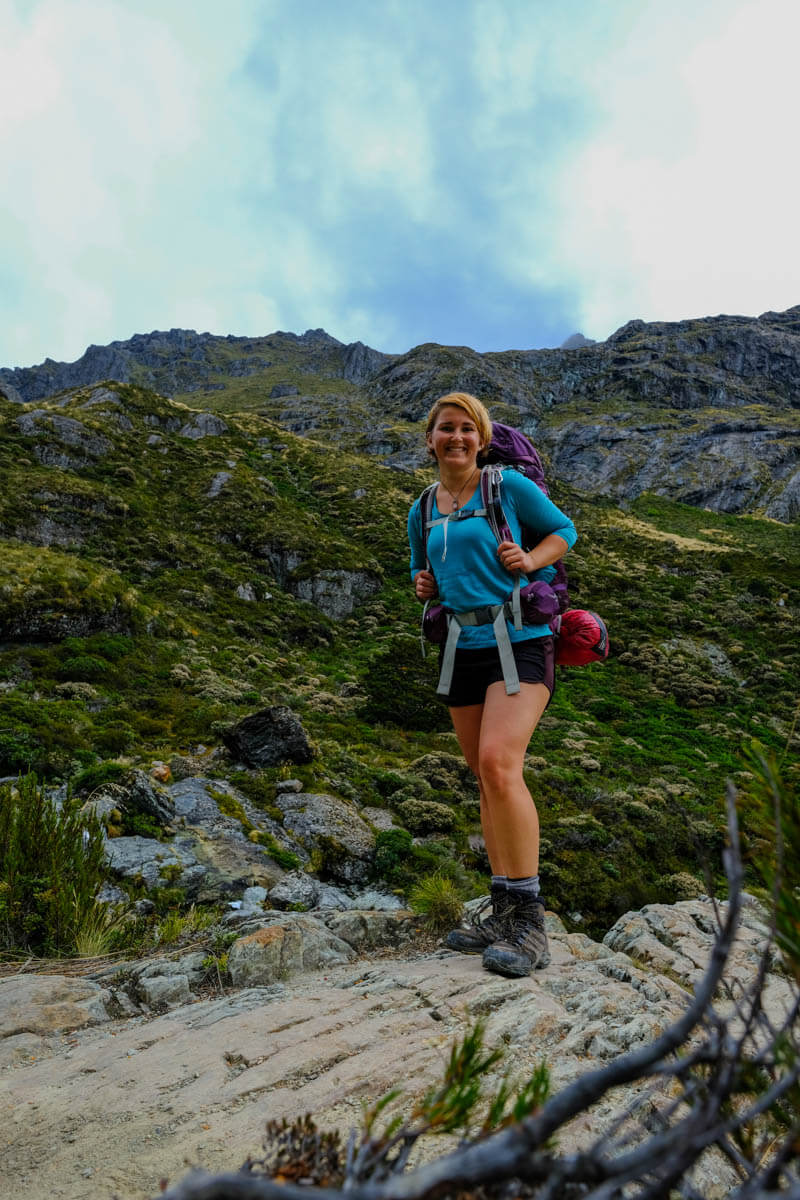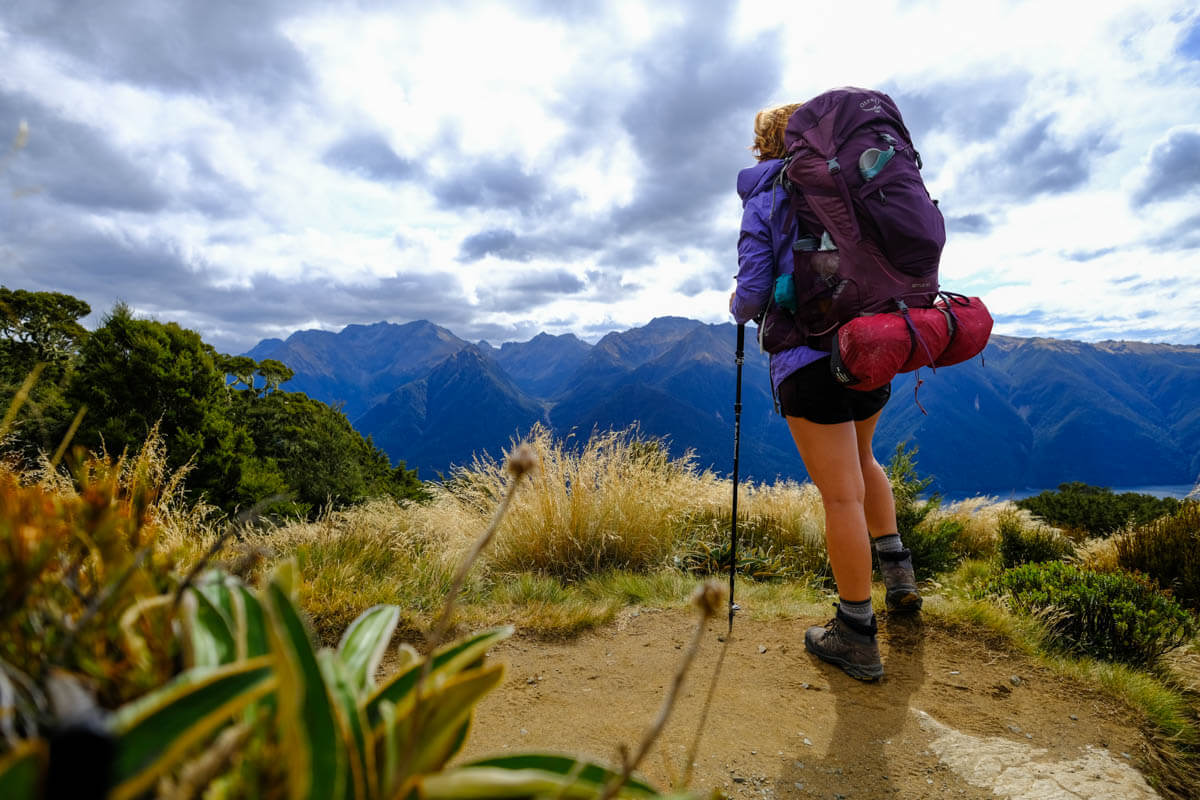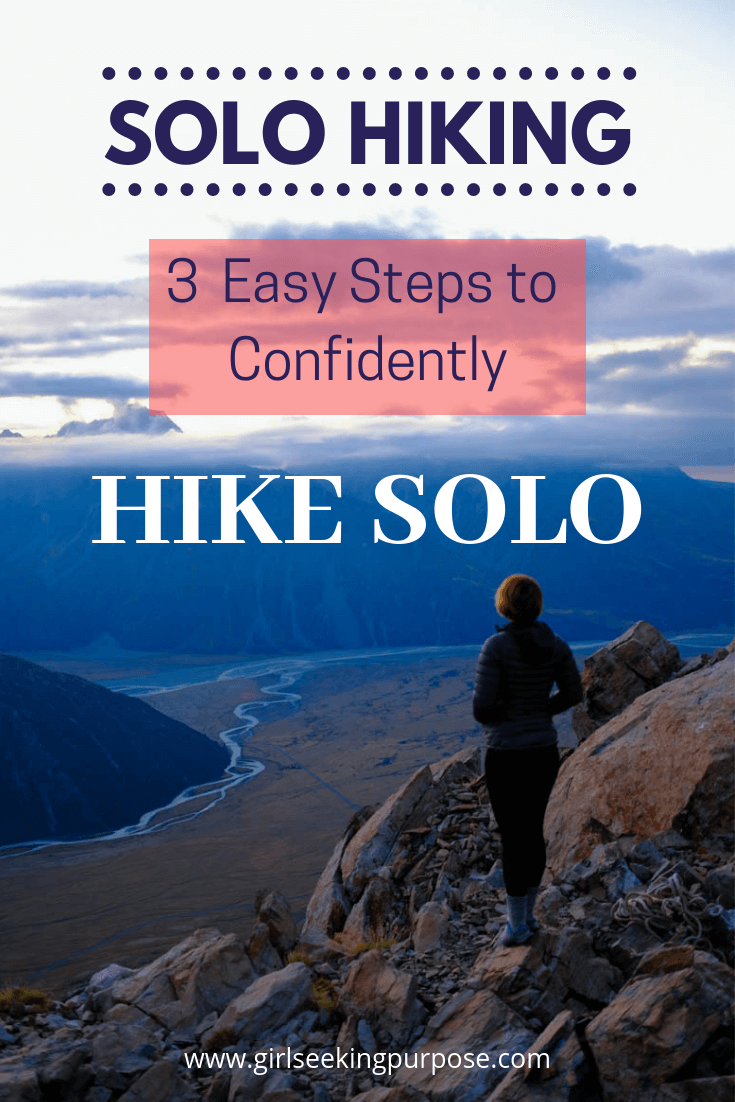Hiking solo is one of the most rewarding and empowering experiences you may ever have in your entire life. You can prove to yourself that you are capable, resilient and independent. It gives you the opportunity to make incredible and life changing trail friendships. And you can also bask in those magical solo hiking moments of deep reflection and gratitude.
If you are yearning to start hiking solo, but you are overwhelmed by concern and fear about hiking on our own, then follow this easy three step guide to become a more confident, prepared and empowered solo hiker.
This post contains affiliate links, which means that if you follow a link for a product or service and make a purchase, I receive a small payment at no extra cost to you. I only recommend products or services that I have used, trust and would honestly recommend to my readers. Building affiliate links into my site will help keep my blog going and continue to allow me to produce the content that I hope you are all enjoying reading.
How To Start Hiking Solo
Majority of my hiking has been as a solo hiker. But before I set out on my first ever solo hike in Patagonia, I was also terrified and concerned about being out on the trail on my own.
I was worried that I wouldn’t meet anyone, that I would be scared and alone, and that I would have no idea what I was doing. Over time, I became a lot more comfortable with hiking solo and with relying on myself and my own abilities while on the trail. I learned from my mistakes, I built up my confidence and knowledge about the outdoors, and became a much more independent and resourceful hiker — and you can too. These are the three easy steps I’ve learned over time to successfully and confidently hike solo.
1. Research What Potential Risks You May Be Faced With on Your Hike
Research the General and Specific Risks of Hiking Solo
The first step is to research the general risks you may be faced with on any given trail in the wilderness. This will be the broadest possible situations that you could encounter anywhere in the world where you are off the grid. Once you have done that, then start to research the specific risks that relate to the trail you plan to hike and the region you are hoping to hike in.
Research the Possible Weather and Wildlife Encounters
Work out what potential weather you may be faced with. Every region of the world has its’ own unique weather conditions and obstacles to overcome. Ensure you are aware of how cold it may get, whether it will be extremely hot, if you will need to take extra water with you, what the wind conditions will be like and if there will be any possible visibility issues. You can easily find this out through numerous blog posts, on Facebook groups and hiking forums, and through your own research on local conservation and government websites.
Then you need to consider the potential wildlife and animals that you might encounter. Research what wildlife you are most likely to come across and also what steps you need to take to lower your risk in relation to them. Some regions have large predators that require very specific preparation with regards to your food and also require you to take steps while on the trail to reduce your risk.
Other regions have smaller, venomous animals that can still pose a risk, but in a different way. You need to know how to identify these animals, how to reduce your risk of being injured by them, and what to do in the even that you are. Don’t be afraid — arm yourself with knowledge and make yourself aware of the risks so that you can combat and reduce them.
Familiarise Yourself with the Trail
The other research step I usually take before hiking solo is to ensure that I am familiar with the trail I am planning to hike. Make sure you have located the trail maps. Ensure you have looked over the trail conditions and elevation gain. Make sure you have identified any known areas where there may be navigational issues or where it may become unsafe in tumultuous weather or where you may lose visibility. It may also be worthwhile working out alternative or emergency routes for hikes that involve alpine passes or highly exposed areas in the even the weather turns significantly and you need to seek shelter or leave entirely.
2. Take Steps to Adequately Prepare Yourself and Your Gear
Prepare and Pack To Combat and Reduce Risk
Once you finish researching and you have a clear idea in your head of what to expect, then you need to take the time to adequately prepare yourself to combat all of the potential scenarios and risks.
Make sure you pack the correct clothing, sleeping and safety gear for the potential weather, wildlife, navigational conditions, and for any unforeseen scenarios. If you are prepared for the absolute worst-case scenario then you will know in the back of your mind that you are ready for anything. Just knowing that will make a huge difference to your confidence levels, and also to your actual safety once on the trail.
Make Sure You Feel Confident and Safe
When hiking solo, you may find that you have a heavier pack. This is because you have to take everything you may possibly need yourself, and you can’t share the load with anyone else. Don’t let this worry you though, and don’t be concerned by what anyone else thinks about how much gear you have brought along. If you are the only person you can rely on while on the trail, it is worth the extra preparation time and the occasional extra weight in your pack to know you are prepared for anything.
Preparing for Weather
With regards to weather, I usually pack for the coldest possible conditions I may be faced with and I always ensure I have waterproofed my pack and sleeping gear. Even if the weather forecast is promising, always prepare for the worst because if the weather changes while you are out there, you will wish you had packed your cold weather or wet weather gear.
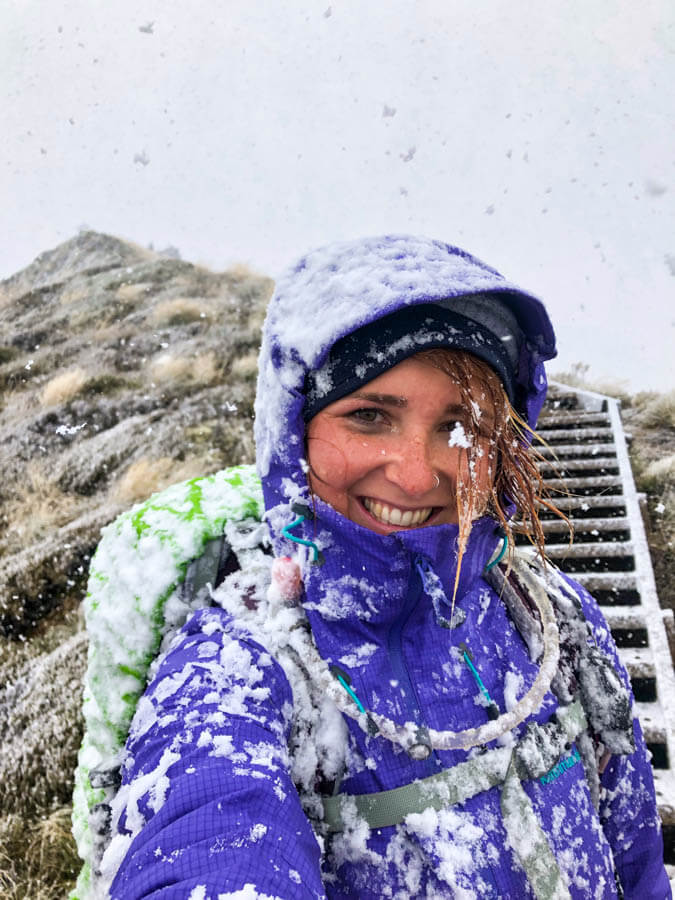
It is possible to experience snow and blizzards even in Summer — the above photo was from March in New Zealand on the Kepler Track!!
Safety Gear as a Solo Hiker
You also need to ensure you take a sufficient first aid kit. While you may encounter someone else on the trail with a first aid kit, you really need to have everything you may need on you in case you find yourself injured while you are hiking solo. You don’t need to take an insane amount of first aid, but at least having enough items to cover the usual injuries and accidents will suffice. If you are hiking in a region with venomous snakes, then you should also ensure you carry a snake bandage. Make sure you adjust your first aid kit based on you first research step and ensure you feel safe and secure before you hit the trail.
Emergency Beacon
When hiking solo, you may also find it useful to take a PLB (personal locator beacon) or other form of emergency device so that if you do end up entirely on your own on the trail and you get into trouble, you are able to request help. While you may never need to use it, and I hope that you won’t, having it with you will give you the peace of mind that you have options if the worst-case scenario were to ever happen.
Trail Maps
In the first step, you familiarised yourself with the trail. In this step, you should be ensuring you have access to the trail map and also navigational equipment. I usually ensure I have the maps downloaded and prepared on my phone on Maps.me. I also take a power bank to recharge my phone as I go.
If you are headed somewhere a little more remote, that may be significantly less trodden and not as well marked then I would also suggest you take a physical paper map and compass. If it is your first few solo hikes, then I would suggest hiking on a few busier trails before tackling something more remote or backcountry. Then once you are confident, you can start exploring some of the more adventurous trails on your own.
Travel Insurance
If you are hiking solo overseas, then it may also be worthwhile ensuring you have adequate travel insurance. Whenever I am hiking outside of my home country, I always make sure I have a sufficient travel insurance policy to cover me for the types of adventure activities I will be doing and the conditions I will be hiking in.
I’ve used World Nomads several times in the past and have always been impressed by their coverage, service and claims handling. But still make sure you read their PDS and terms and conditions for yourself to ensure it is right for you before making a purchase. Follow the link below to get your quote now — and if you decide to go ahead and you want to support this blog, then use this link when purchasing your policy and I will receive a small payment at no extra cost to you.
3. Don’t be Afraid of Being On Your Own When Hiking Solo
Fear Is Your Biggest Obstacle When Hiking Solo
This is one of the biggest obstacles to overcome to start confidently hiking solo. Your emotional brain thinks up all of the possible reasons why you shouldn’t be out their hiking on your own. It can be very convincing and can often cause you to opt out entirely.
Even Experienced Solo Hikers Still Have to Overcome This
I will let you in on a secret — I was just as stressed, nervous and scared as you before my first solo hike. I had all the same doubts, concerns and worries. And I still sometimes find myself stressing before a solo hike even though I have now hiked more than 500km of trails as a solo hiker. I have never regretted any hike that I have done on my own. I have only ever regretted hikes that I did not do — when I let fear get in the way of my dreams and passions.
No matter how nervous I was before departing, the second my boots hit that trail I felt instant relief, joy and gratefulness that I had ventured out on my own. So long as you are adequately prepared and have followed the first two steps, you will feel just as confident and empowered.
You May Not Even Be On Your Own
There are also two very good reasons why you should not stress about being on your own on the trail.
Depending where you are hiking, you may not even be entirely on your own on the trail. You may find that once you are on the trail, you are surrounded by people the entire time.
I can count on one hand the amount of times I have ever actually been entirely on my own on a hiking trail. I find it almost impossible to not meet people sometimes and it is actually one of my favourite aspects of solo hiking. Being on your own makes it is so easy to make friends with other solo and group hikers because you are more inclined to strike up a conversation, you are more flexible with your hiking route and pace, and everyone is a little more open when on the trail. I have become part of so many trail families while on solo hikes, and formed friendships that will last a lifetime.
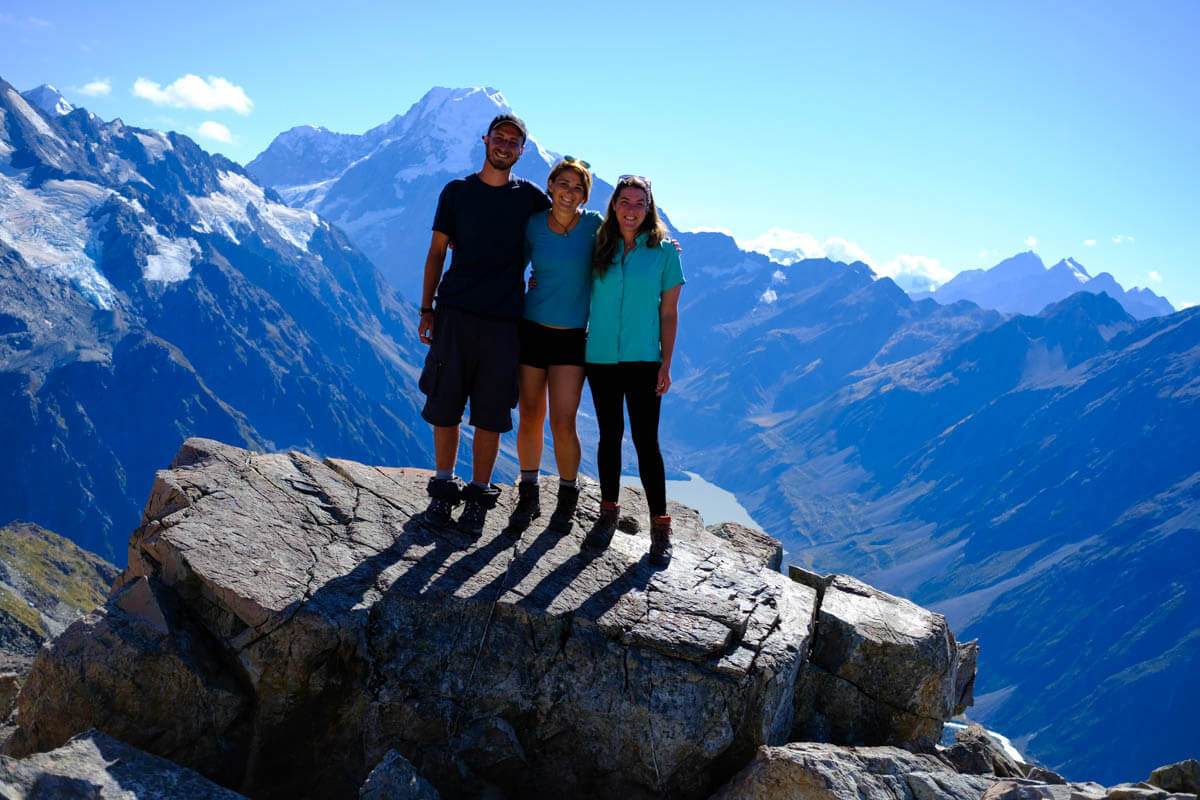
I met these two incredible people while hiking solo on the overnight hike up to the Mueller Hut in the Mt Cook National Park in New Zealand.
Being Alone Can Be Just As Incredible
The second possibility when hiking solo, is that you may end up on your own on the trail. While this may sound scary or intense before you are out there, it doesn’t have to be. It can actually be such a gift to be in the wilderness on your own and to just disconnect from life, the world and from people.
If you have completed the first two steps sufficiently then you should have nothing to worry about. You will be prepared and confident that you can tackle anything you are faced with on your own. And once you are feeling satisfied that you are a well-prepared wilderness bad-ass, you can focus on the other incredible benefits of hiking solo – having some time to yourself. It is incredible how deeply you can reflect on your own thoughts and life while out on the trail, particularly if you are hiking solo. I have had some of my most life-changing moments while trudging along on a trail on my own.
What to Pack for a Solo Hike
In the second step I talked about preparing your clothing and gear for all the possible weather scenarios and conditions. I have a separate post about packing which details everything I believe you need to take on a multi-day trek in an alpine environment. Obviously you may need or want to adjust this to suit your own personal preference and the conditions of the area you will be hiking in, but it is an excellent place to start if you are a beginner.
If you are only tackling a day hike as a solo hiker then you won’t need all of the gear that is laid out in that more extensive post. All you really need are snacks, water, layers for potential weather you may encounter, and your first aid kit / emergency gear. On an average day hike I usually take the following items;
- 18L Osprey Ultralight Stuff Pack
or Osprey 20L Tempest day pack
- Fujifilm X-T2 Camera
, a wide angle lens
and a general purpose / portrait lens
, and accessories
- CamelBak water reservoir
/ Nalgene water bottle
- Snacks (muesli bars, dried fruit and nut, Clif bars
and / or fresh fruit or snacks depending on the length of the hike)
- Water/windproof jacket if the weather turns
— this jacket from Arc’teryx
is excellent quality, or or a jacket from The North Face
- XT Ultralight Packable Down Jacket or Arc’teryx fleece
in case it will be cold at the summit or if completing a sunrise hike
- Headlamp
in case you lose light
- Phone for emergencies and maps.me
- First Aid Kit
- Personal Locator Beacon (PLB)
— depending on how remote your hike will be, although I always carry one regardless
Recommended Reads
If all of this has convinced you to get out there and start hiking solo, but you need to build yourself a hiking bucket list first, then check out some of my other hiking related posts. I have a lot of posts about Patagonia on the blog at present and will soon be putting together several posts about hiking in New Zealand and Australia. Sign up to my newsletter to stay up to date, and have a read of these posts in the meantime: –
- The 4 Day Trek to Cerro Castillo, on the Carretera Austral in Chile
- The Best Hikes in El Chaltén, in Argentina
- Hiking and Camping in Pumálin Park, on the Carretera Austral in Chile
- The Best Hikes in Bariloche, in Northern Patagonia, Argentina
- Adventure Activities and Hiking on the Carretera Austral, Chile
- The Ultimate Guide to Torres Del Paine, The O Circuit, and The W Trek, Chile
Be a Confident Solo Hiker
Don’t wait for someone else to have the time, energy and commitment to join you on your epic adventures. If there are incredible trails, far off distant places, and stunning peaks that you want to explore — then go out there and hike them. Become the confident and empowered solo hiker you were born to be!
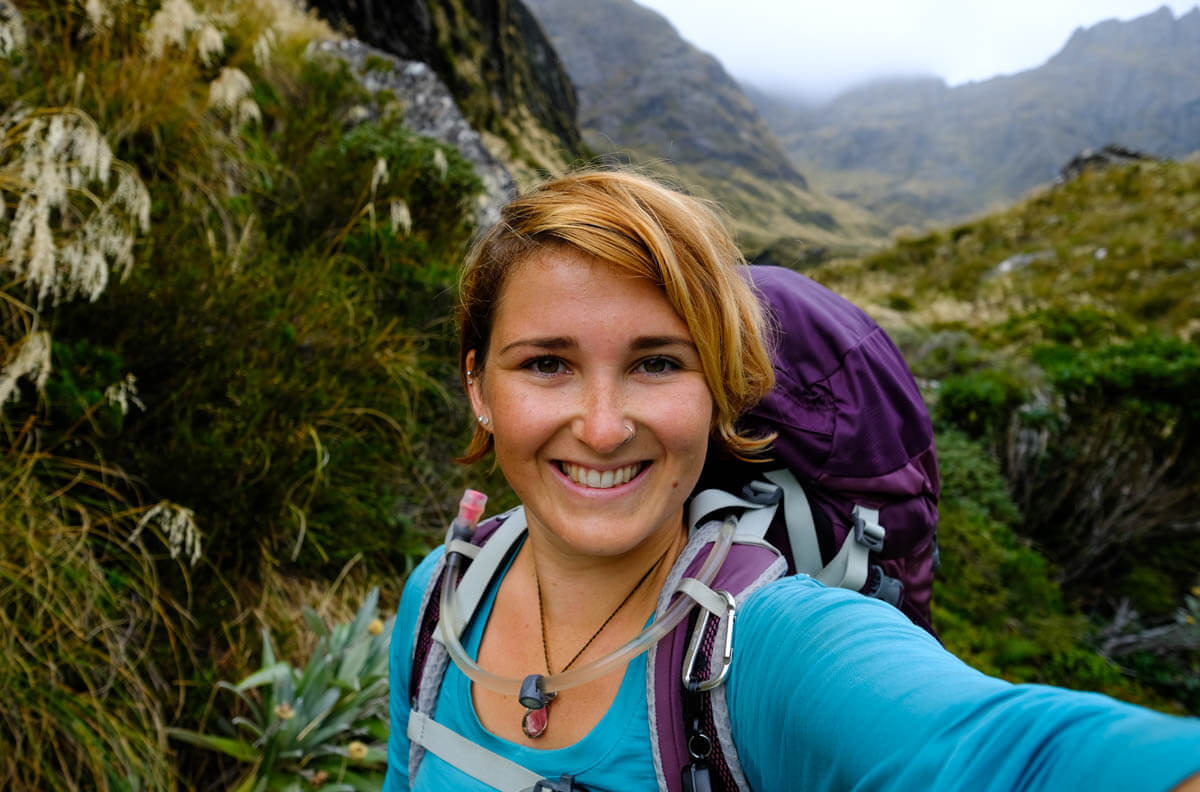
Arm yourself with knowledge and preparation, and then believe in yourself and your abilities to conquer those mountains!
Save it for Later
Why not save this guide about confidently hiking solo for later on Pinterest? You can share it to Facebook with friends and family as well. If you have any other concrete tips on how to overcome the fears of being a solo hiker then please leave them in the comments section below. Let me know if you have any questions too!
--Girl Seeking Purpose
